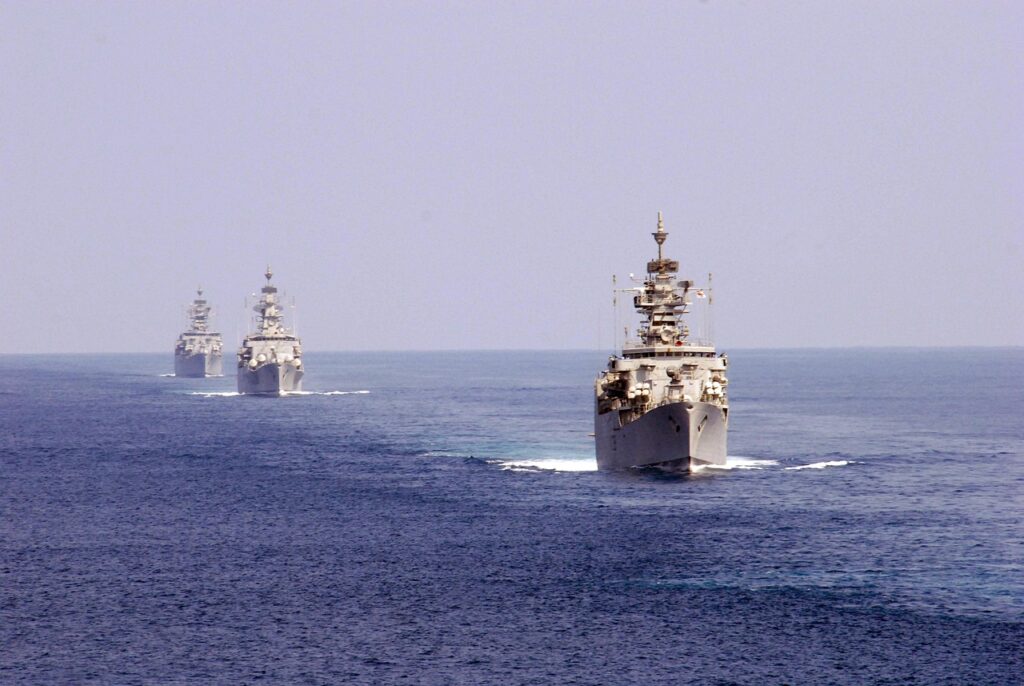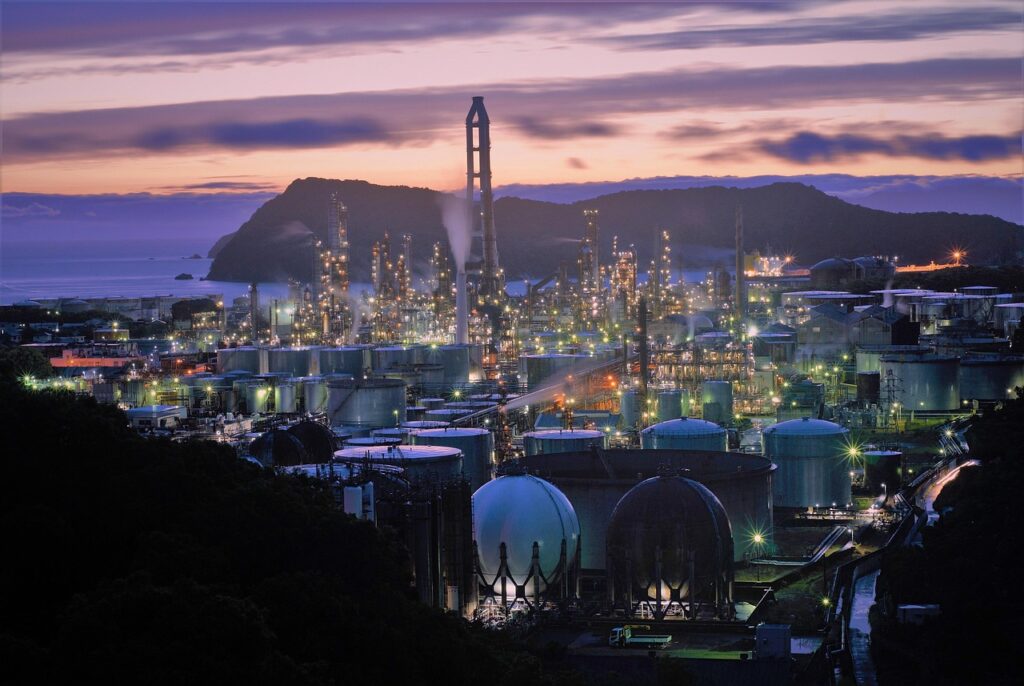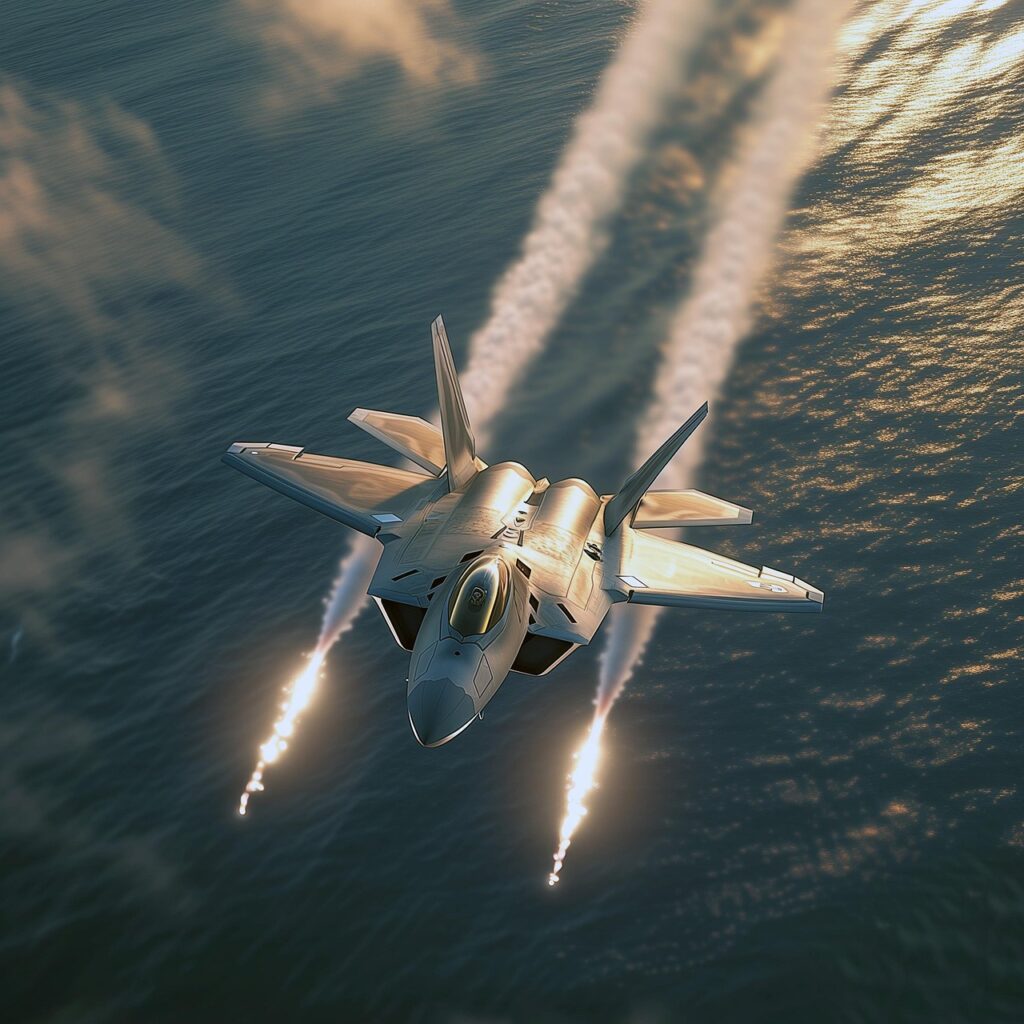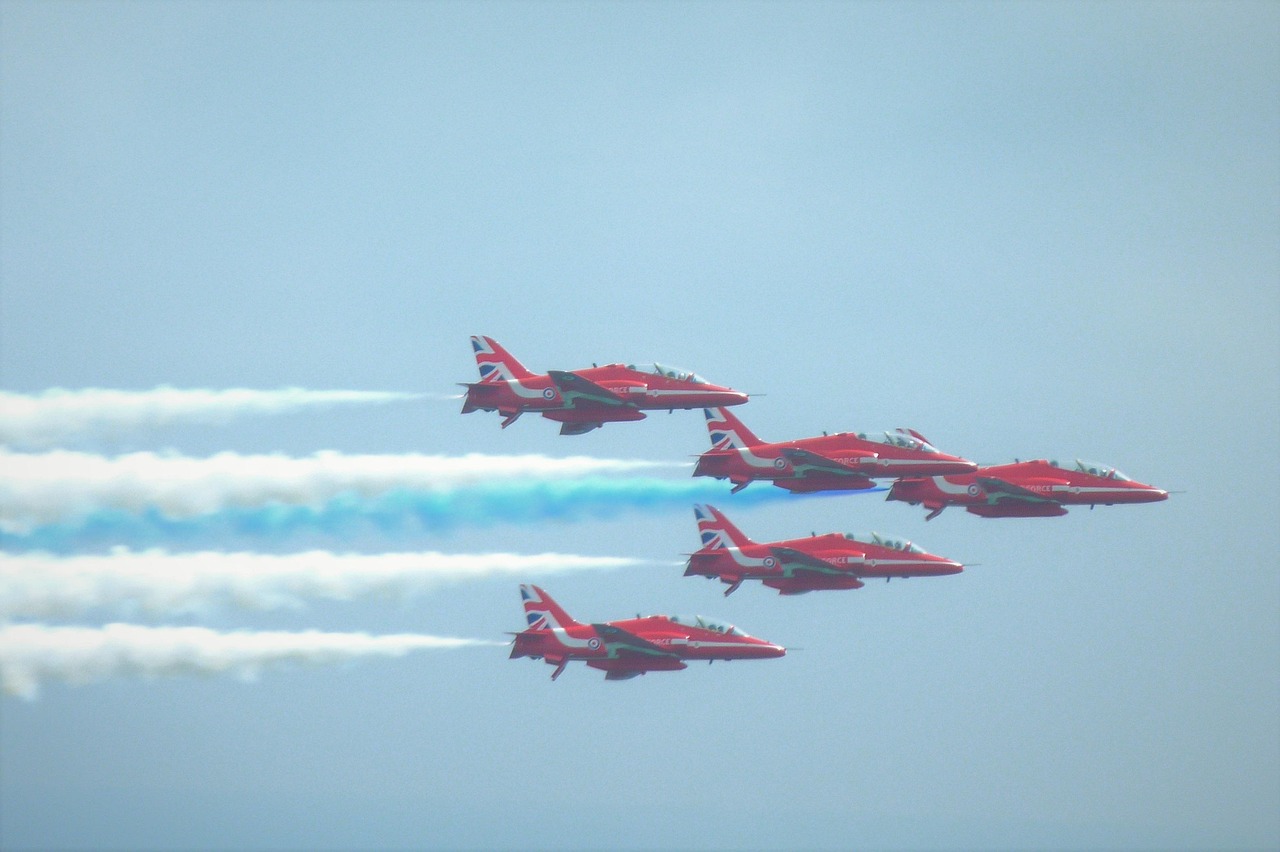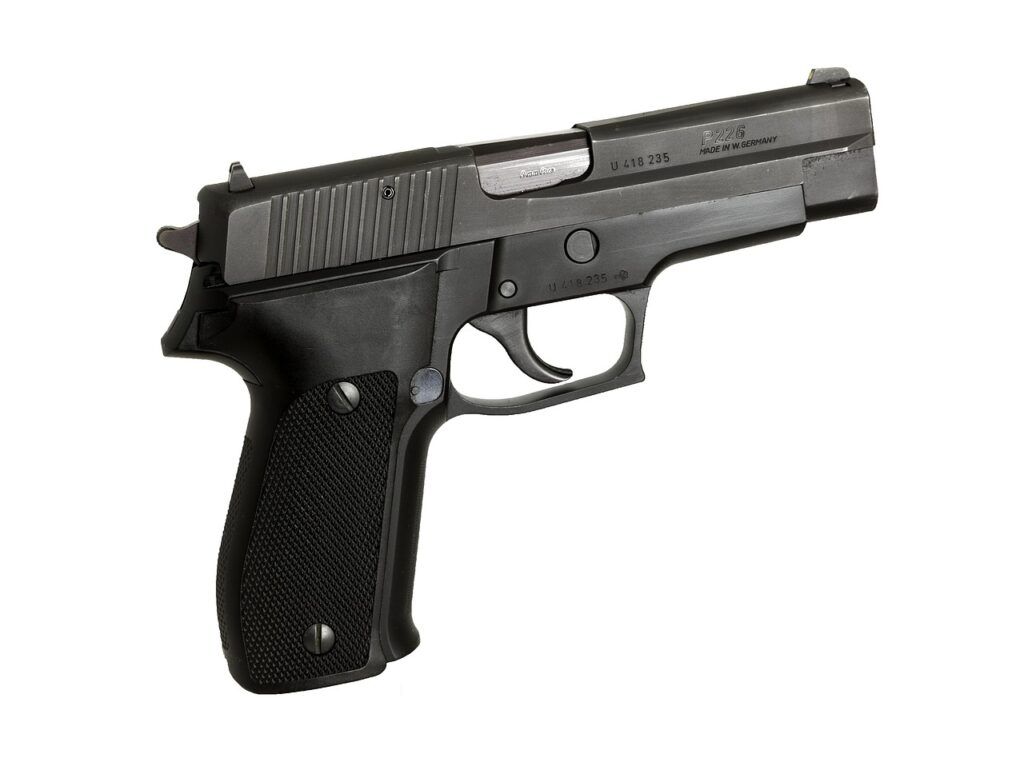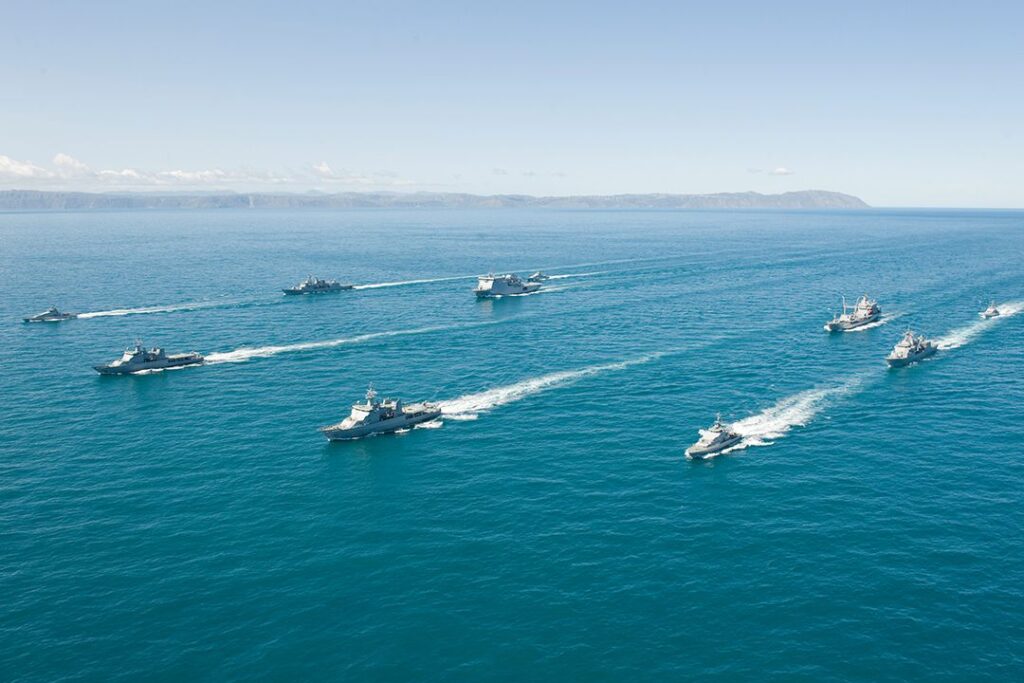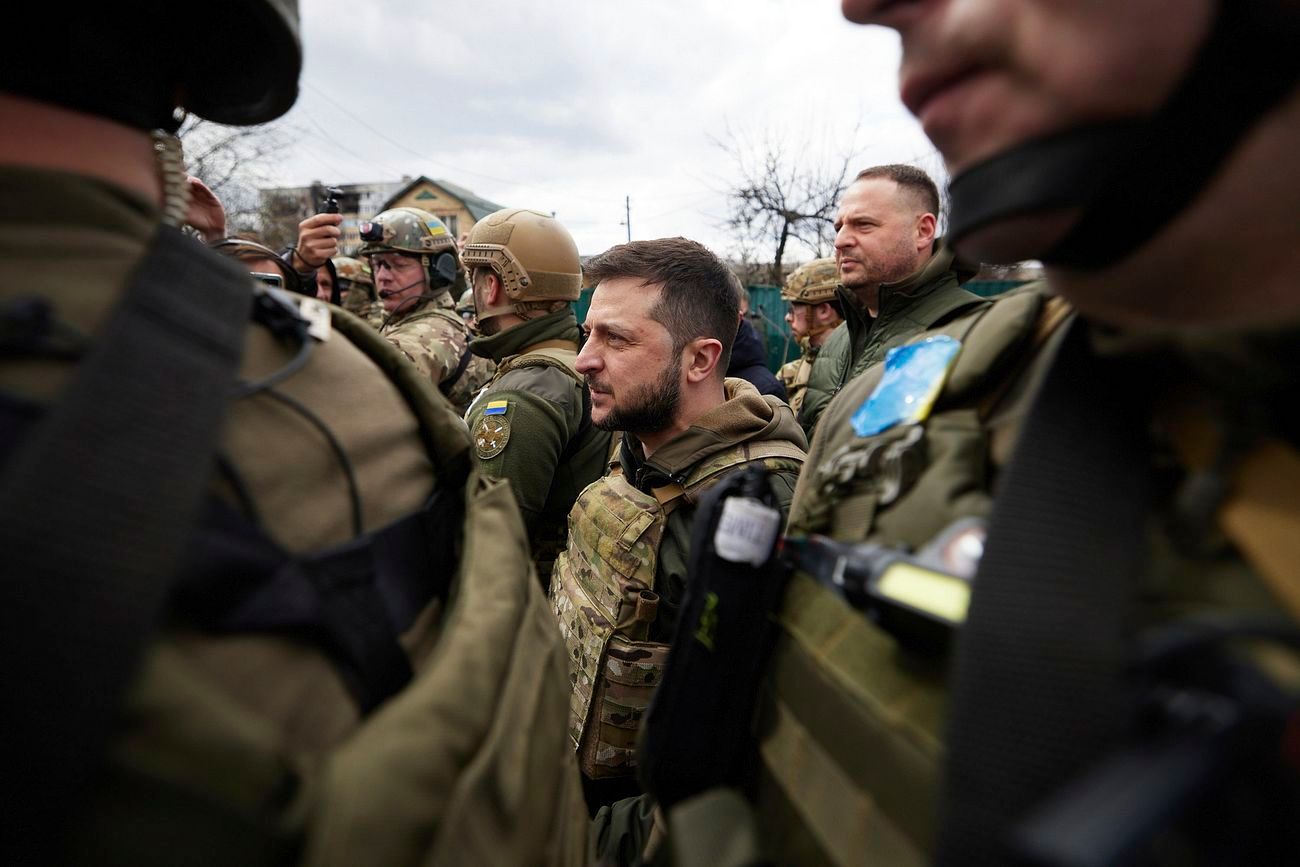The recent military parade through central Beijing was a profound and fearsome exhibition of China’s burgeoning military might. It served as an unequivocal declaration from President Xi Jinping that his vision for a new world order, with China at its strategic apex, will be backed by high-tech armaments that, in many critical areas, appear to be outpacing those of its established rivals. The event underscored Beijing’s unwavering commitment to projecting undeniable strength and sophisticated military prowess on the global stage.
While post-parade scrutiny naturally focused on new long-range, nuclear-armed weapons like the DF-61 intercontinental ballistic missile, other crucial developments warrant deeper analysis. The display of new mobile truck- and ship-mounted laser air defense systems, for instance, could fundamentally reshape regional security dynamics. If these are, as China indicated, already deployed in significant numbers across the People’s Liberation Army (PLA) forces, they could present substantial challenges to any adversary countering Chinese military movements.
Despite these compelling demonstrations, declaring the PLA the world’s preeminent military force remains premature. The impressive volume and advanced nature of the hardware—from strategic missiles to unmanned systems and directed energy weapons—demands attention. Yet, true military effectiveness encompasses more than parade-ready equipment, extending to operational experience and doctrinal integration. This article delves into critical insights from this pivotal display, analyzing key elements driving China’s military trajectory.

1. **New Strategic Offensive Weapons: DF-61 ICBM and Hypersonic Glide Vehicles (HGVs)** The parade prominently featured a new generation of strategic offensive weaponry to enhance China’s deterrence. Foremost was the DF-61 intercontinental ballistic missile (ICBM), a colossal system on an eight-axle truck. This missile is set to be the PLA Rocket Force’s first new ICBM since the DF-41’s 2019 introduction, signifying continuous evolution in China’s strategic missile development and bolstering its nuclear deterrent through mobile deployment.
Beyond conventional ballistic missiles, the exhibition highlighted missiles equipped with hypersonic glide vehicles (HGVs). These advanced systems carry warheads at speeds exceeding five times the speed of sound. More critically, HGVs utilize irregular flight trajectories, profoundly complicating tracking and neutralization by existing missile defense systems. This maneuverability fundamentally challenges established defense paradigms, potentially offering China a distinct advantage in penetrating sophisticated air and missile defenses.
The advanced status and ostensible deployment readiness of such weapons demonstrate a deliberate strategy for “overmatch” in key strategic domains. The combined display signals a multi-faceted approach to offensive capabilities, aiming for robust conventional and nuclear strike capacities. These assets are integral to Xi Jinping’s assertion of a “new world order” backed by formidable high-tech arms, sending an unequivocal message about China’s commitment to modernizing its strategic forces and projecting global influence.
Military equipment: Oreshnik (missile)
Name: Oreshnik
Type: Intermediate-range ballistic missile
Origin: Russia
IsMissile: true
Service: 2025
UsedBy: Russia
Wars: Russo-Ukrainian War
DesignDate: 2020s
DevelopedFrom: RS-26 Rubezh
UnitCost: Unknown
ProductionDate: Tue Dec 31 2024 16:00:00 GMT-0800 (Pacific Standard Time)
Filling: Nuclear weapons
VehicleRange: Intermediate
Speed: 10 Mach
Categories: Articles containing Russian-language text, Articles with short description, CS1 Russian-language sources (ru), CS1 maint: multiple names: authors list, Intermediate-range ballistic missiles of Russia
Summary: Oreshnik (Russian: Орешник, lit. ’Hazel tree’), is a Russian intermediate-range ballistic missile (IRBM) characterized by its reported speed exceeding Mach 10 (12,300 km/h; 7,610 mph; 3.40 km/s), according to the Ukrainian military. The missile is equipped with six warheads, each reportedly containing submunitions, and has been described as highly difficult to intercept, though modern ballistic missile interceptors are designed to counter this type of system. Deputy Pentagon Press Secretary Sabrina Singh has identified the Oreshnik as a variant of the RS-26 Rubezh IRBM.
Get more information about: Oreshnik (missile)

2. **Advanced Drone Capabilities Across Domains** A pervasive and striking aspect of the parade was the extensive array of drones, signifying China’s profound investment in unmanned systems for combat and support roles. This diverse showcase spanned from colossal extra-large unmanned submarines to sophisticated aircraft designed as “loyal wingmen” alongside PLAAF stealth fighters. This integration highlights a strategic commitment to leveraging unmanned systems across all operational environments.
Ground-based drones were also prominently featured, configured for various critical battlefield functions. Some were visibly armed with machine guns, indicating potential for direct combat support. Others were specifically adapted for mine-clearing, enhancing safety. Logistics-focused ground drones underscored an emphasis on streamlining supply chains and minimizing human exposure, reflecting a holistic approach to battlefield automation and efficiency.
Expert analysis supports the advanced nature of these systems. Malcolm Davis of ASPI observed that “The unmanned systems that the Chinese are displaying today are quite significantly advanced. They seem to be more advanced in some respects than what we’re seeing in the West, and they’re in operational service.” This assessment underscores not only China’s developmental progress but also the operational readiness and deep integration of these diverse platforms within the PLA. This wide array of applications confirms a strategic pivot towards “intelligent warfare,” characterized by autonomous and networked capabilities.
Military equipment: Manned-unmanned teaming
Categories: All articles containing potentially dated statements, All articles with dead external links, All articles with unsourced statements, All self-contradictory articles, Articles containing potentially dated statements from March 2023
Summary: Manned-unmanned teaming refers to the collaborative operation of manned and unmanned systems, typically in military or aerospace contexts, to enhance mission effectiveness. It enables human operators to control, coordinate, or supervise autonomous or semi-autonomous platforms, such as drones or robotic systems, to improve situational awareness, reduce risk, and optimize performance in complex environments.
A loyal wingman is a proposed type of unmanned combat air vehicle (UCAV) which incorporates artificial intelligence (AI) and is capable of collaborating with the next generation of crewed combat aircraft, including sixth-generation fighters and bombers such as the Northrop Grumman B-21 Raider. Also unlike the conventional UCAV, the loyal wingman is expected to be capable of surviving on the battlefield but to be significantly lower-cost than a crewed aircraft with similar capabilities. In the US, the concept is known as the collaborative combat aircraft (CCA). CCAs are intended to operate in collaborative teams with the next generation of manned combat aircraft, including sixth-generation fighters and bombers such as the Northrop Grumman B-21 Raider. Unlike the conventional UCAVs, the CCA incorporates artificial intelligence (AI), denoted an “autonomy package”, increasing its survivability on the battlefield. It is still expected to cost much less than a manned aircraft with similar capabilities. The US Air Force plans to spend more than $8.9 billion on its CCA programs from fiscal years 2025 to 2029, with an additional $661 million planned for fiscal year 2024. The success of the CCA program may lessen the need for additional manned squadrons.
Get more information about: Manned-unmanned teaming
Read more about: China’s Parade of Power: A New Chapter in the World’s Greatest Military Rivalry, Signifying a Shifting Global Order
3. **Directed Energy Weapons (DEWs), Particularly Lasers** Among cutting-edge armaments, directed energy weapons (DEWs) attracted significant attention, with lasers being a particular highlight. The PLA showcased two distinct laser weapon systems: a massive variant engineered for naval air defense and a smaller, truck-mounted version designed to protect ground troops. These demonstrations signal a concrete commitment to weapons poised to revolutionize air defense and battlefield security, offering a fundamentally different approach compared to kinetic systems.
Directed energy weapons, encompassing high-powered microwave systems, operate by harnessing electromagnetic energy rather than physical projectiles. Their primary function is to neutralize targets through intense heat, disruption of internal electrical systems, or the blinding of sensitive sensors. This non-kinetic methodology offers distinct operational and logistical advantages, making them a compelling option for future defense strategies.
A key benefit of DEWs lies in their remarkable cost-effectiveness. A single shot from a laser is reported to cost only a fraction of a traditional bullet or missile, offering substantial expenditure reduction, particularly in high-volume engagements. Coupled with simplified logistics, this economic efficiency is transformative. Unlike kinetic weapons needing heavy projectiles, DEWs primarily require an energy source, significantly easing logistical burdens. The deployment of such laser systems for drone defense appears to be an area where Beijing is gaining an edge, indicating a sophisticated, layered defense approach.
Military equipment: Directed-energy weapon
Categories: All Wikipedia articles written in American English, All articles with dead external links, All articles with unsourced statements, Articles with dead external links from February 2024, Articles with dead external links from June 2012
Summary: A directed-energy weapon (DEW) is a ranged weapon that damages its target with highly focused energy without a solid projectile, including lasers, microwaves, particle beams, and sound beams. Potential applications of this technology include weapons that target personnel, missiles, vehicles, and optical devices.
In the United States, the Pentagon, DARPA, the Air Force Research Laboratory, United States Army Armament Research Development and Engineering Center, and the Naval Research Laboratory are researching directed-energy weapons to counter ballistic missiles, hypersonic cruise missiles, and hypersonic glide vehicles. These systems of missile defense are expected to come online no sooner than the mid to late 2020s.
China, France, Germany, the United Kingdom, Russia, India, Israel are also developing military-grade directed-energy weapons, while Iran and Turkey claim to have them in active service. The first use of directed-energy weapons in combat between military forces was claimed to have occurred in Libya in August 2019 by Turkey, which claimed to use the ALKA directed-energy weapon. After decades of research and development, most directed-energy weapons are still at the experimental stage and it remains to be seen if or when they will be deployed as practical, high-performance military weapons.
Get more information about: Directed-energy weapon
4. **China’s Industrial Might and Production Capacity** The sheer volume and diversity of military hardware displayed affirmed China’s immense industrial capacity. This capability suggests Beijing can not only verbally reinforce its geopolitical stances but also physically enforce Xi Jinping’s vision for a new global order. This level of industrial might draws historical parallels to the United States’ World War II production scale, an event the parade commemorated, highlighting a profound strategic economic shift.
Crucially, while US industrial output was pivotal in World War II, the contemporary landscape shows a significant reversal. “America now doesn’t have the capacity to turn out weaponry in the numbers that China can.” This fundamental shift represents a substantial strategic advantage for Beijing. Malcolm Davis noted, “What the Chinese are demonstrating here is an ability to develop advanced military capabilities by themselves, deploy them operationally and do it faster than what you’re seeing happen in the West. And also do it in larger volume in terms of sheer numbers of weapons deployed.”
This ability to indigenously develop, deploy, and mass-produce advanced military systems with greater speed and in larger quantities carries profound implications for the global strategic balance. It points to a resilient and self-sufficient defense industrial base that minimizes reliance on foreign suppliers, reducing vulnerability to external pressures. Retired Australian Army Maj. Gen. Mick Ryan highlighted this self-sufficiency, stating China “just about builds everything it needs indigenously,” implying Beijing “could not be coerced” by foreign weapon suppliers.
Military equipment: Electricity sector in China
Country: China
Capacity: gigawatt
Capacityyear: 2023
Production: petawatt-hour
Productionyear: 2021
Categories: All articles lacking reliable references, All articles needing additional references, All articles to be expanded, All articles with dead external links, All articles with unsourced statements
Summary: China is the world’s largest electricity producer. It overtook the United States in 2011 after rapid growth since the early 1990s. In 2021, China produced 8,534 terawatt-hour (TWh) of electricity, which was approximately 30% of the world’s electricity production.
Most of the electricity in China comes from coal power, which accounted for 62% of electricity generation in 2021 and is a big part of greenhouse gas emissions by China. Power generated from renewable energy has also been continuously increasing in the country. The national electricity generation from renewable energy reached 594.7 TWh in Q1 2023, an increase of 11.4% year-on-year, including 342.2 TWh of wind and solar power, up 27.8% year-on-year.
In 2023, China’s total installed electric generation capacity was 2.92 TW, of which 1.26 TW was renewable, including 376 GW from wind power and 425 GW from solar power. As of 2023, the total power generation capacity for renewable energy sources in China is at 53.9%. The rest was mostly coal capacity, with 1040 GW in 2019. Nuclear also plays an increasing role in the national electricity sector. As of February 2023, China has 55 nuclear plants with 57 GW of power in operation, 22 under construction with 24 GW and more than 70 planned with 88 GW. About 5% of electricity in the country comes from nuclear energy.
China has two wide area synchronous grids, the State Grid and the China Southern Power Grid. The northern power grids were synchronized in 2005.
Since 2011 all Chinese provinces are interconnected. The two grids are joined by HVDC back-to-back connections.
China has abundant energy reserves with the world’s fourth-largest coal reserves and massive hydroelectric resources. There is however a geographical mismatch between the location of the coal fields in the north-east (Heilongjiang, Jilin, and Liaoning) and north (Shanxi, Shaanxi, and Henan), hydropower in the south-west (Sichuan, Yunnan, and Tibet), and the fast-growing industrial load centers of the east (Shanghai-Zhejiang) and south (Guangdong, Fujian).
Get more information about: Electricity sector in China
Read more about: China’s Parade of Power: A New Chapter in the World’s Greatest Military Rivalry, Signifying a Shifting Global Order
5. **Rising Defense Spending and Regional Dominance** The bedrock of Beijing’s ambitious military modernization is a dramatic and sustained increase in defense spending. Analysis from the CSIS China Power Project reveals a 13-fold surge in China’s defense expenditure over the past 30 years. This consistent financial commitment swiftly narrows the gap with the United States; while China’s spending remains approximately one-third of the US total, it has halved that disparity in just the last 12 years. This trajectory signals a deliberate and substantial allocation of national resources toward military expansion.
Regionally, China’s defense spending paints an even more striking picture of overwhelming dominance. The CSIS report states that “China towers over its neighbors, spending five times as much on defense as Japan and nearly seven times as much as South Korea—two key US allies in the region.” This colossal financial advantage enables China to maintain a significant quantitative and qualitative edge over its immediate neighbors, potentially deterring regional challenges and solidifying its position as the preeminent military power in Asia.
This substantial and sustained investment empowers the PLA to acquire and develop a vast array of advanced weapon systems. This financial muscle is not solely about purchasing power; it vigorously fuels a robust domestic defense industrial base, facilitating indigenous research, development, and mass production. Furthermore, it supports extensive training, infrastructure development, and personnel modernization, cultivating a comprehensive and formidable military establishment. This aggressive escalation in defense spending serves as a critical enabler for China’s broader geopolitical aspirations.
Military equipment: Mar-a-Lago Accord
Categories: 2020s in economic history, Articles with short description, CS1 errors: missing periodical, Economy of the United States, Foreign exchange market
Summary: The Mar-a-Lago Accord is a proposed economic and trade initiative of the Donald Trump administration during his second term. Named after Trump’s Mar-a-Lago estate in Florida, the Accord is a blueprint for restructuring global trade and monetary relations. Its core goal is to devalue the dollar while preserving its role as the world reserve currency, a careful balancing act intended to avoid the contradictions described in the Triffin paradox. The plan seeks to reduce the United States trade deficit, restore domestic manufacturing, and realign international economic relationships. It proposes to achieve these aims through the use of tariffs, currency and capital measures, and trade agreements tied to national security. Drawing inspiration from the 1944 Bretton Woods Agreement and the 1985 Plaza Accord, the Mar-a-Lago Accord envisions a similarly large scale realignment of global trade and currency systems.
As of early 2025, the Mar-a-Lago Accord has not been implemented and remains in the earliest stages of negotiation. Its success is highly uncertain, and many of its provisions are deliberately kept confidential to avoid disrupting delicate international talks. Public insight into the Accord is limited and primarily based on the work and public statements of Stephen Miran, chair of the Council of Economic Advisers, and Scott Bessent, Secretary of the Treasury. Miran’s report, A User’s Guide to Restructuring the Global Trading System, outlines many of the core ideas and principles believed to underpin the proposal.
Get more information about: Mar-a-Lago Accord
Read more about: Beyond the Spectacle: What China’s Military Parade Reveals for Asia and a Reordering World

6. **Naval Superiority in Numbers: A Growing Fleet** Perhaps one of the most significant shifts in military power emerging between China and the United States concerns naval strength. Projections indicate that “China is expected to have 48% more battle force ships than the US by 2030.” This projected numerical superiority marks a critical inflection point in global naval capabilities and underscores China’s relentless shipbuilding program aimed at establishing clear maritime dominance, particularly within the crucial Indo-Pacific region. A 2023 paper by a US Naval War College professor noted that “the bigger fleet almost always wins.”
This rapid and expansive growth of the battle force fleet is not merely about quantity; it reflects a strategic imperative to project power, secure vital sea lanes, and support potential operations, especially in high-stakes scenarios such as a Taiwan contingency. The expansion encompasses a diverse range of modern vessels, including aircraft carriers, advanced destroyers, stealth submarines, and amphibious assault ships, forging a comprehensive blue-water navy. This profound investment signifies Beijing’s determination to challenge traditional maritime supremacy.
The concept of “fleet size” extends beyond a simple count of hulls; it speaks directly to the sustained operational presence and logistical reach that a numerically superior navy can command. A greater number of ships facilitates more distributed operations and increased presence in strategically contested waters. This numerical advantage, particularly when synergized with China’s increasingly sophisticated indigenous naval technologies, positions Beijing as an exceptionally formidable maritime force. While some suggest US technological superiority (e.g., AI-powered drones), the parade showed the PLA “packed with drones – for combat on the ground, in the air and at sea,” demonstrating China’s aggressive integration of advanced unmanned technologies.
Military equipment: High Seas Fleet
UnitName: High Seas Fleet
Caption: Dreadnought
Dates: 16 February 1907 – 10 January 1919
Country: German Empire
Branch: navy
Type: naval fleet
Size: ~100 ships
Battles: Battle of Jutland
NotableCommanders: Prince Henry of Prussia (1862–1929),Henning von Holtzendorff,Friedrich von Ingenohl,Hugo von Pohl,Reinhard Scheer,Franz von Hipper,Ludwig von Reuter
Categories: Articles containing French-language text, Articles containing German-language text, Articles with short description, CS1 German-language sources (de), Good articles
Summary: The High Seas Fleet (German: Hochseeflotte) was the battle fleet of the German Imperial Navy and saw action during the First World War. In February 1907, the Home Fleet (Heimatflotte) was renamed the High Seas Fleet. Admiral Alfred von Tirpitz was the architect of the fleet; he envisioned a force powerful enough to challenge the Royal Navy. Kaiser Wilhelm II, the German Emperor, championed the fleet as the instrument by which he would seize overseas possessions and make Germany a global power. By concentrating a powerful battle fleet in the North Sea while the Royal Navy was required to disperse its forces around the British Empire, Tirpitz believed Germany could achieve a balance of force that could seriously damage British naval hegemony. This was the heart of Tirpitz’s “Risk Theory”, which held that Britain would not challenge Germany if the latter’s fleet posed such a significant threat to its own.
The primary component of the Fleet was its battleships, typically organized in eight-ship squadrons, though it also contained various other formations, including the I Scouting Group. At its creation in 1907, the High Seas Fleet consisted of two squadrons of battleships, and by 1914, a third squadron had been added. The dreadnought revolution in 1906 greatly affected the composition of the fleet; the twenty-four pre-dreadnoughts in the fleet were rendered obsolete and required replacement. Enough dreadnoughts for two full squadrons were completed by the outbreak of war in mid-1914; the eight most modern pre-dreadnoughts were used to constitute a third squadron. Two additional squadrons of older vessels were mobilized but later disbanded.
The fleet conducted a series of sorties into the North Sea during the war, designed to lure out an isolated portion of the numerically superior British Grand Fleet. These operations frequently used the fast battlecruisers of the I Scouting Group to raid the British coast as the bait for the Royal Navy. These operations culminated in the Battle of Jutland, on 31 May – 1 June 1916, where the High Seas Fleet confronted the whole of the Grand Fleet. The battle was inconclusive but it was a strategic victory for the British as it convinced Admiral Reinhard Scheer, the German fleet commander, that even a highly favorable outcome to a fleet action would not secure German victory in the war. Scheer and other senior admirals advised the Kaiser to order a resumption of the unrestricted submarine warfare campaign. The primary responsibility of the High Seas Fleet in 1917 and 1918 was to secure the German naval bases in the North Sea for U-boat operations. The fleet continued to conduct sorties into the North Sea and detached units for special operations in the Baltic Sea against the Russian Baltic Fleet. Following the German defeat in November 1918, the Allies interned the bulk of the High Seas Fleet in Scapa Flow, where it was ultimately scuttled in June 1919, days before the belligerents signed the Treaty of Versailles.
Get more information about: High Seas Fleet
7. **PLAAF Fighter Fleet Transformation: From Legacy to Stealth Generations** The People’s Liberation Army Air Force (PLAAF) has undergone a dramatic transformation, moving from an aging fleet to one predominantly composed of modern fourth- and fifth-generation fighters. This transition aligns with a global trend where advanced air forces retire less capable, older-generation aircraft in favor of more sophisticated, albeit more expensive, state-of-the-art platforms. For the PLAAF, this involved a strategic phasing out of legacy systems and aggressive procurement of cutting-edge indigenous designs.
Quantitative data from IISS Military Balance reports illustrate this profound shift. The total number of PLAAF fighters, multirole fighters, and ground-attack aircraft decreased from 2,453 in 2007 to 2,065 in 2025. This numerical reduction, however, belies a substantial increase in overall combat capability. Nearly all of the PLAAF’s second-generation (J-6, Q-5) and third-generation (J-7 and J-8) aircraft have been definitively retired. This critical generational transition was particularly pronounced between 2010 and 2012, resulting in a managed dip in force size.
The outcome is a force that, while quantitatively smaller, is now “much more capable.” This modernized fleet primarily consists of advanced fourth-generation fighters, such as the indigenously produced J-10 series and the J-11B (an improved Su-27 variant). Crucially, it also features the rapidly expanding numbers of its formidable fifth-generation stealth fighter, the J-20. Further, the J-31 prototype has evolved into the more capable J-35 variant, and a PLA sixth-generation stealth fighter prototype was reportedly displayed in late 2024. This continuous, rapid evolution firmly positions the PLAAF among the most technologically advanced air forces globally.
Military equipment: SSBN – Fleet Ballistic Missile Submarine
Manufacturer: General Dynamics Electric Boat Division
Service: USN
Armament: 24 tubes for Trident II submarine-launched ballistic missiles, MK48 torpedoes, four torpedo tubes
Propulsion: One nuclear reactor, one shaft.
Speed: 20+ knots
Crew: 15 Officers, 140 Enlisted
Categories: Ballistic Missile Submarines, Navy Equipment, Navy Ships and Submarines, Ships and Submarines, Submarines
Get more information about: SSBN – Fleet Ballistic Missile Submarine

8. **PLAAF Bomber Fleet Modernization and Stealth Capabilities**The PLAAF’s transformation extends beyond its fighter jets, encompassing a significant modernization of its bomber fleet. While the total number of bombers in 2025 (219) is only slightly smaller than in 2007 (222), the capabilities of these aircraft have been dramatically enhanced. This shift involved the complete retirement of older H-5 medium bombers and most early-production H-6 models, making way for a far more capable force.
The current PLAAF bomber force predominantly consists of newer H-6 variants, which, despite being based on a late-1950s Soviet design, have been extensively upgraded. These improvements include higher-performance turbofan engines and crucial aerial refueling capabilities, significantly extending their range and operational flexibility. Critically, these modernized H-6 aircraft primarily serve as long-range missile carriers.
The H-6N variant, for instance, is anticipated to carry both nuclear and conventional versions of an air-launched ballistic missile, likely based on the DF-21. This strategic role as a standoff weapon platform allows the PLAAF to project power without necessarily requiring the bomber itself to penetrate advanced air defenses. This approach maximizes the effectiveness of sophisticated missiles against distant targets.
Looking ahead, the PLAAF is keenly awaiting the development and deployment of the H-20 strategic bomber. This next-generation platform is expected to incorporate stealth features, positioning it to potentially assume a penetrating nuclear delivery role. The H-20 represents a significant technological leap for the PLAAF bomber force, promising to fundamentally alter its strategic options and capabilities in contested airspace.
Read more about: Iran Seeks Chinese J-10C Jets After Russian Su-35 Deal Falters Amid Conflict Losses
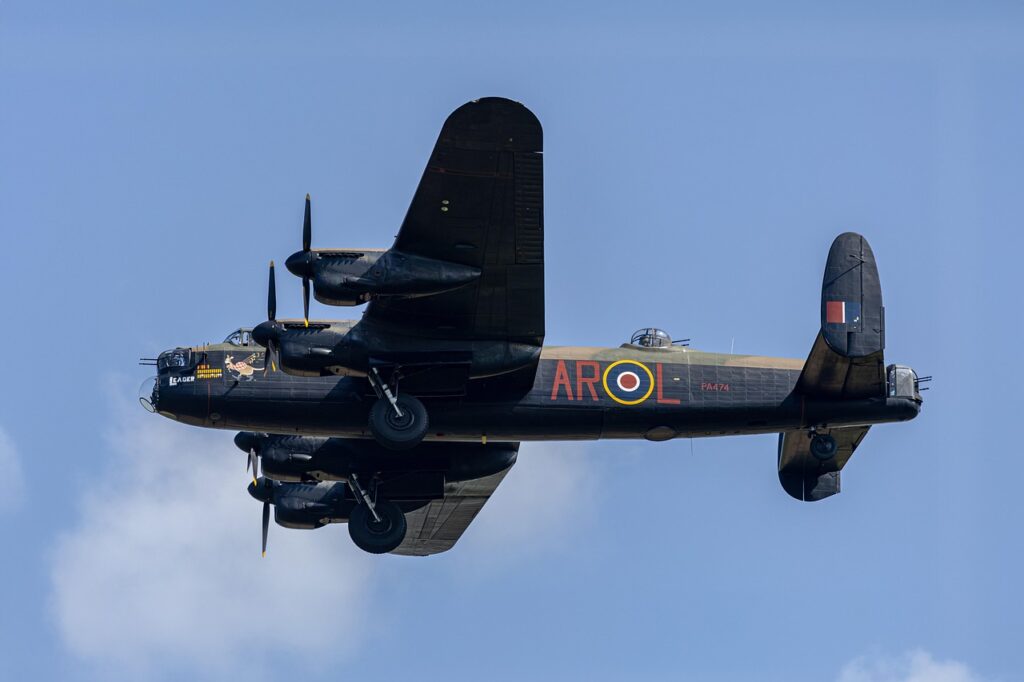
9. **Expansion and Modernization of PLAAF Support Aircraft**The modernization narrative of the PLAAF would be incomplete without acknowledging the crucial expansion and enhancement of its support aircraft fleet. In 2007, the PLAAF operated a rather limited number of air refuelable fighters and bombers, relying on a small fleet of HY-6 tankers and a planned, but troubled, purchase of Il-78 tankers from Russia. The HY-6, unfortunately, could only refuel J-10 aircraft, while the Il-78 was restricted to Soviet-derived designs, highlighting a significant constraint on operational reach.
Fast forward to 2025, and the PLAAF boasts a substantially larger and more capable tanker fleet. Newly built YY-20A tankers are now entering service, with expectations that they will eventually phase out the older HY-6 models. These advanced tankers are routinely operating with PLAAF bombers, enabling long-range missions that were previously difficult or impossible, thereby acting as vital force multipliers for the combat fleet.
A similar trajectory is evident in the transport fleet. While the total number of transports remains roughly consistent, the composition has drastically improved. Many of the older, smaller Y-5 transports have been retired, replaced by indigenous Y-8 and Y-9 medium transports, which offer greater range and lift capacity. Crucially, the PLAAF now operates approximately 55 indigenously produced Y-20 heavy transport aircraft, with more on order. These larger, longer-range aircraft are transforming the PLA’s logistical capabilities for expeditionary operations and rapid deployment.
Despite these significant strides, a quantitative gap persists when comparing the PLAAF’s support aircraft to those of other major air forces. In 2025, support aircraft constitute only about 17 percent of the PLAAF’s fleet, a figure that pales in comparison to the Russian air force (34 percent) and the U.S. Air Force (31 percent). This indicates a continued, albeit evolving, emphasis on combat aircraft, while the maturation and routine deployment of these new, more capable support systems are steadily enhancing the overall effectiveness of the force.
Military equipment: People’s Liberation Army Air Force
UnitName: People’s Liberation Army Air Force
Caption: Emblem of the People’s Liberation Army Air Force
StartDate: start date and age
Country: PRC
Allegiance: CCP flag
Type: Air force
Role: Aerial warfare,Airborne forces,Air defense
Size: 403000 active personnel
CommandStructure: armed forces
Garrison: Beijing
GarrisonLabel: Headquarters
Motto: lang,Serve the People
Colours: color box
ColoursLabel: Colors
March: March of the Chinese Air Force
Anniversaries: 11 November annually
Battles: blist
Commander1: Jiang (rank),Chang Dingqiu
Commander1Label: Commander of the People’s Liberation Army Air Force
Commander2: Jiang (rank),Guo Puxiao
Commander2Label: Political Commissar
Commander3: Jiang (rank),Wang Gang (general)
Commander3Label: Chief of Staff
IdentificationSymbol: File:Roundel of China.svg,File:Roundel of China – Low Visibility – Type 2.svg
IdentificationSymbolLabel: Military aircraft insignia
IdentificationSymbol2: File:Air Force Flag of the People’s Republic of China.svg
IdentificationSymbol2Label: Flag
IdentificationSymbol3: File:People’s Liberation Army Air Force sleeve badge.svg
IdentificationSymbol3Label: Sleeve badge
AircraftBomber: Xian JH-7,Xian H-6
AircraftElectronic: Tu-154,Shaanxi Y-8,Shaanxi Y-9,J-16D
AircraftFighter: Shenyang J-8,Chengdu J-10,Shenyang J-11,Shenyang J-16,Chengdu J-20,Shenyang J-35,Su-27,Su-30MKK,Su-35S
AircraftHelicopter: Harbin Z-8,Harbin Z-9
AircraftHelicopterAttack: Harbin Z-19,CAIC Z-10
AircraftHelicopterUtility: Harbin Z-20
AircraftInterceptor: Shenyang J-8
AircraftTrainer: Hongdu L-15,Hongdu JL-8,JL-9
AircraftTransport: Xian Y-20,Shaanxi Y-9,Shaanxi Y-8,Xian Y-7,Il-76
AircraftTanker: Xian H-6,Il-78
Module: infobox Chinese
S: 中国人民解放军空军
T: 中國人民解放軍空軍
P: Zhōngguó Rénmín Jiěfàngjūn Kōngjūn
L: China People Liberation Army Air Army
Order: st
Child: yes
Categories: 1949 establishments in China, All Wikipedia articles needing context, All Wikipedia articles written in American English, All articles with unsourced statements, All pages needing cleanup
Summary: The People’s Liberation Army Air Force, also referred to as the Chinese Air Force (中国空军) or the People’s Air Force (人民空军), is the primary aerial warfare service of the People’s Liberation Army. The PLAAF controls most of the PLA’s air assets, including tactical aircraft, large airlifters, and strategic bombers. It includes ground-based air defense assets, including national early-warning radars, and controls the Airborne Corps.
The PLAAF traces its origins to the establishment of a small aviation unit by the Chinese Communist Party (CCP) in 1924, during the early years of the Republic of China. This initial group comprised nine cadets who trained under the Guangzhou Revolutionary Government Aviation Bureau, with further advanced training in the Soviet Union. Despite initial resource constraints, including a lack of aircraft and airfields, the CCP’s Central Military Commission (CMC) established foundational aviation schools and, by the end of World War II, had begun significant organizational developments.
The formal establishment of the PLAAF occurred on November 11, 1949, following the CCP’s victory in the Chinese Civil War. Early on, the PLAAF operated a mix of captured Kuomintang (KMT) and Soviet aircraft and began organizing its structure around several aviation divisions. The PLAAF first faced combat in the Korean War against the United States using primarily the Mikoyan-Gurevich MiG-15 fighter aircraft provided by the Soviet Union, which also assisted with the expansion of the Chinese aerospace industry. Post-Korean War, the PLAAF focused on enhancing air defense capabilities, a strategy influenced by political decisions to limit offensive operations. The 1960s brought considerable challenges due to the Sino-Soviet split, which strained resources and technical support. This period also saw the detrimental impacts of the Cultural Revolution on the PLAAF’s development and readiness. In the following decades, especially the 1980s, the PLAAF underwent significant reforms which included force reduction and reorganization aimed at modernizing its capabilities in line with advancing air power technology. These efforts were somewhat hampered by the aftermath of the 1989 Tiananmen Square protests and massacre, which resulted in Western sanctions but eventually led to increased military collaboration with Russia in the 1990s.
Entering the 21st century, the PLAAF made substantial progress in transitioning to more modern airpower with the acquisition and development of advanced aircraft like the Sukhoi Su-27 and domestic models such as the J-10 and J-20. The strategic orientation of the PLAAF continued to evolve with a focus on expanding its operational capabilities, including the development of long-range bombers and enhancing joint operational capacity with other branches of the Chinese military.
Get more information about: People’s Liberation Army Air Force
10. **Evolution of PLAAF Airborne Early Warning (AEW), ISR, and EW Capabilities**A critical component of any modern air force’s operational effectiveness is its ability to conduct comprehensive intelligence, surveillance, reconnaissance (ISR), and electronic warfare (EW), underpinned by robust airborne early warning (AEW) systems. In 2007, the PLAAF was in the nascent stages, primarily experimenting with prototypes of AEW aircraft, which were not yet operationally deployed and even experienced a tragic crash. However, the landscape has been profoundly transformed by 2025.
Today, the PLAAF operates an impressive fleet of about 54 AEW aircraft, encompassing various designs such as the KJ-2000, KJ-200, and the advanced KJ-500, which became operational in 2015. These sophisticated platforms are routinely integrated into air defense and bomber operations, providing crucial threat warnings and coordinating complex aerial maneuvers. Their participation in joint China-Russia bomber patrols underscores their operational readiness and strategic importance.
In the realm of ISR and EW, the PLAAF has similarly shed its reliance on older, less capable platforms. While it continues to operate Russian-purchased Tu-154 long-range ELINT aircraft, it has retired older tactical ISR/EW systems based on the J-6 fighter. Instead, the force now employs a diverse array of dedicated systems built upon more modern platforms like the J-8 and J-16 fighters, as well as the Y-8 and Y-9 transports, significantly enhancing its intelligence-gathering and electronic combat capabilities.
The PLAAF’s sustained investment in EW is particularly evident through the increase in dedicated aircraft, moving beyond simply installing EW systems onto existing platforms. The Y-8 series has expanded, new Y-9 variants like the Y-9G and Y-9XZ have entered service, and most notably, the J-16D electronic jamming platforms are now fully operational. These advanced EW assets have been observed participating in exercises around Taiwan, showcasing the PLAAF’s increased ability to wage informationized warfare and neutralize enemy air defenses. Furthermore, uncrewed platforms are increasingly being utilized for ISR purposes, although comprehensive open-source data on their exact numbers and deployments remains limited.
Military equipment: Glossary of military abbreviations
Categories: Articles with short description, Glossaries of the military, Lists of government and military acronyms, Military lists, Short description is different from Wikidata
Summary: List of abbreviations, acronyms and initials related to military subjects such as modern armor, artillery, infantry, and weapons, along with their definitions.
Get more information about: Glossary of military abbreviations
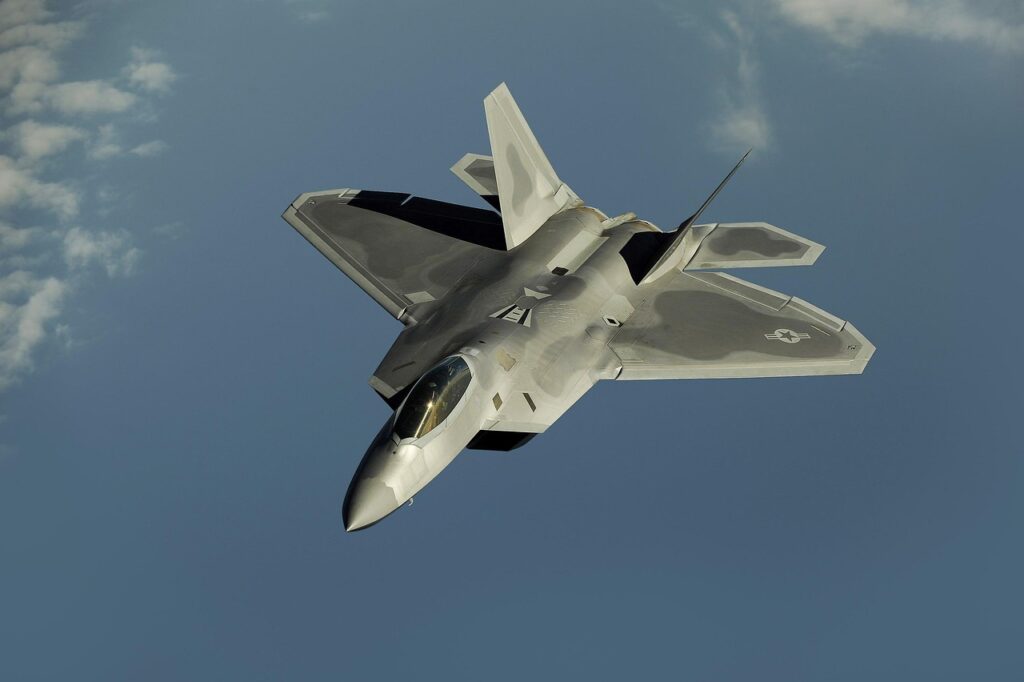
11. **PLAAF Reorganization and Shifting Roles/Missions**The People’s Liberation Army (PLA) underwent a sweeping reorganization between 2015 and 2016, profoundly altering the command structure and roles of its constituent forces, including the PLAAF. This transformation shifted the role of PLAAF headquarters from an operational commander to primarily a “force provider,” with its tactical aviation assets and command responsibilities decentralizing to five newly established joint theater command air forces. This monumental change aimed to foster greater jointness and integrated operations across the entire PLA.
A significant, albeit unsuccessful, bid by the PLAAF during these reforms was to gain control of the space mission set, a strategic priority that had been strongly advocated by former PLAAF commander Xu Qiliang. However, this mission was ultimately reallocated from the general departments to the aerospace force within the new PLA Strategic Support Force (SSF, which later became an independent entity. Despite this, the PLAAF still maintains some space assets and space-based equipment, primarily for information and intelligence support, underscoring its continued interest in the domain.
The heightened prominence of “counter-intervention” as a core PLA planning scenario, particularly concerning a potential Taiwan contingency involving U.S. forces, has had direct implications for PLAAF force structure and mission priorities. A central aspect of this strategy is developing robust long-range strike capabilities designed to attack critical U.S. air bases and aircraft carriers. The PLAAF’s role in this anti-access/area-denial effort prioritizes H-6, and eventually H-20, bombers capable of carrying long-range anti-ship and land-attack cruise missiles, thereby holding distant U.S. naval assets and bases at risk.
Furthermore, the counter-intervention strategy also involves developing the capability to neutralize key enablers of U.S. airstrikes, such as tanker aircraft, standoff jammers like the EC-130 Compass Call, and airborne warning and control (AWACS) aircraft. The PLAAF’s advanced J-20 stealth fighters, optimized with stealth capabilities and long-range air-to-air missiles, are earmarked for this mission, likely supported by PLAAF AEW aircraft to identify targets and coordinate these complex attacks. These shifts underscore a more offensive and integrated operational doctrine for the modern PLAAF.
Military equipment: People’s Liberation Army Air Force
UnitName: People’s Liberation Army Air Force
Caption: Emblem of the People’s Liberation Army Air Force
StartDate: start date and age
Country: PRC
Allegiance: CCP flag
Type: Air force
Role: Aerial warfare,Airborne forces,Air defense
Size: 403000 active personnel
CommandStructure: armed forces
Garrison: Beijing
GarrisonLabel: Headquarters
Motto: lang,Serve the People
Colours: color box
ColoursLabel: Colors
March: March of the Chinese Air Force
Anniversaries: 11 November annually
Battles: blist
Commander1: Jiang (rank),Chang Dingqiu
Commander1Label: Commander of the People’s Liberation Army Air Force
Commander2: Jiang (rank),Guo Puxiao
Commander2Label: Political Commissar
Commander3: Jiang (rank),Wang Gang (general)
Commander3Label: Chief of Staff
IdentificationSymbol: File:Roundel of China.svg,File:Roundel of China – Low Visibility – Type 2.svg
IdentificationSymbolLabel: Military aircraft insignia
IdentificationSymbol2: File:Air Force Flag of the People’s Republic of China.svg
IdentificationSymbol2Label: Flag
IdentificationSymbol3: File:People’s Liberation Army Air Force sleeve badge.svg
IdentificationSymbol3Label: Sleeve badge
AircraftBomber: Xian JH-7,Xian H-6
AircraftElectronic: Tu-154,Shaanxi Y-8,Shaanxi Y-9,J-16D
AircraftFighter: Shenyang J-8,Chengdu J-10,Shenyang J-11,Shenyang J-16,Chengdu J-20,Shenyang J-35,Su-27,Su-30MKK,Su-35S
AircraftHelicopter: Harbin Z-8,Harbin Z-9
AircraftHelicopterAttack: Harbin Z-19,CAIC Z-10
AircraftHelicopterUtility: Harbin Z-20
AircraftInterceptor: Shenyang J-8
AircraftTrainer: Hongdu L-15,Hongdu JL-8,JL-9
AircraftTransport: Xian Y-20,Shaanxi Y-9,Shaanxi Y-8,Xian Y-7,Il-76
AircraftTanker: Xian H-6,Il-78
Module: infobox Chinese
S: 中国人民解放军空军
T: 中國人民解放軍空軍
P: Zhōngguó Rénmín Jiěfàngjūn Kōngjūn
L: China People Liberation Army Air Army
Order: st
Child: yes
Categories: 1949 establishments in China, All Wikipedia articles needing context, All Wikipedia articles written in American English, All articles with unsourced statements, All pages needing cleanup
Summary: The People’s Liberation Army Air Force, also referred to as the Chinese Air Force (中国空军) or the People’s Air Force (人民空军), is the primary aerial warfare service of the People’s Liberation Army. The PLAAF controls most of the PLA’s air assets, including tactical aircraft, large airlifters, and strategic bombers. It includes ground-based air defense assets, including national early-warning radars, and controls the Airborne Corps.
The PLAAF traces its origins to the establishment of a small aviation unit by the Chinese Communist Party (CCP) in 1924, during the early years of the Republic of China. This initial group comprised nine cadets who trained under the Guangzhou Revolutionary Government Aviation Bureau, with further advanced training in the Soviet Union. Despite initial resource constraints, including a lack of aircraft and airfields, the CCP’s Central Military Commission (CMC) established foundational aviation schools and, by the end of World War II, had begun significant organizational developments.
The formal establishment of the PLAAF occurred on November 11, 1949, following the CCP’s victory in the Chinese Civil War. Early on, the PLAAF operated a mix of captured Kuomintang (KMT) and Soviet aircraft and began organizing its structure around several aviation divisions. The PLAAF first faced combat in the Korean War against the United States using primarily the Mikoyan-Gurevich MiG-15 fighter aircraft provided by the Soviet Union, which also assisted with the expansion of the Chinese aerospace industry. Post-Korean War, the PLAAF focused on enhancing air defense capabilities, a strategy influenced by political decisions to limit offensive operations. The 1960s brought considerable challenges due to the Sino-Soviet split, which strained resources and technical support. This period also saw the detrimental impacts of the Cultural Revolution on the PLAAF’s development and readiness. In the following decades, especially the 1980s, the PLAAF underwent significant reforms which included force reduction and reorganization aimed at modernizing its capabilities in line with advancing air power technology. These efforts were somewhat hampered by the aftermath of the 1989 Tiananmen Square protests and massacre, which resulted in Western sanctions but eventually led to increased military collaboration with Russia in the 1990s.
Entering the 21st century, the PLAAF made substantial progress in transitioning to more modern airpower with the acquisition and development of advanced aircraft like the Sukhoi Su-27 and domestic models such as the J-10 and J-20. The strategic orientation of the PLAAF continued to evolve with a focus on expanding its operational capabilities, including the development of long-range bombers and enhancing joint operational capacity with other branches of the Chinese military.
Get more information about: People’s Liberation Army Air Force
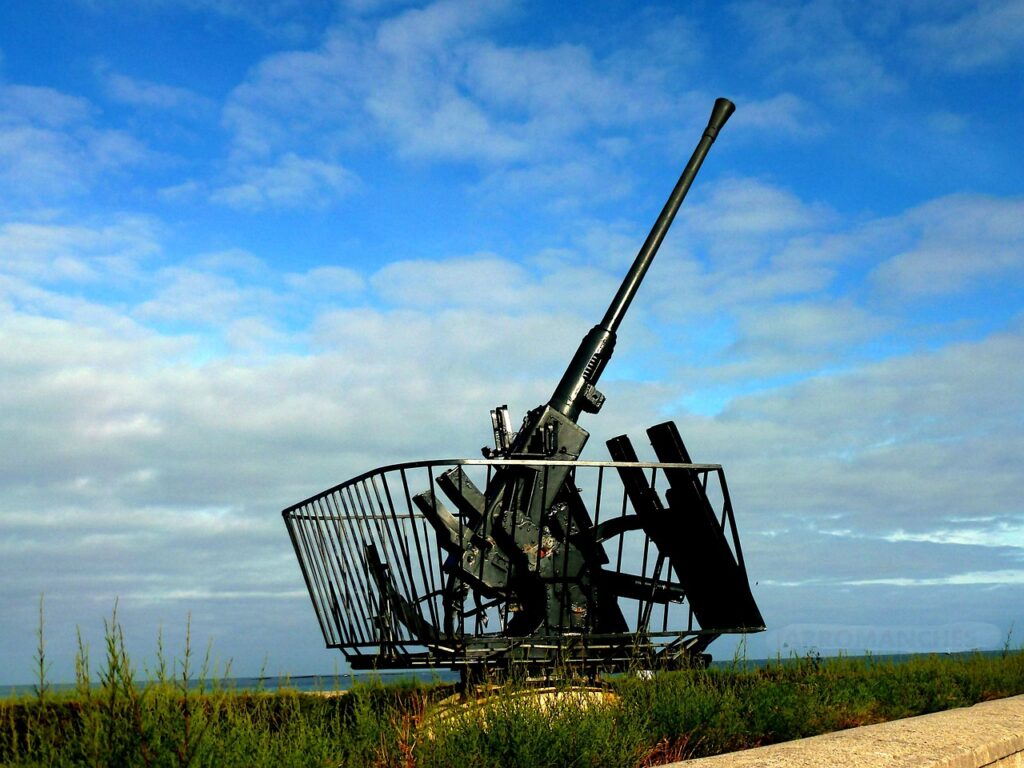
12. **Consolidation of Coastal Air Defense and Maritime Strike Missions**Historically, responsibilities for coastal air defense and maritime strike missions were bifurcated between the PLAAF and the PLAN Naval Aviation arm, leading to complexities in coordination and command. Naval Aviation units were tasked with defending China’s coasts, near-shore waters, and associated airspace, while the air force concentrated on territorial air defense and offensive counter-air operations. This division, while functional, created inherent challenges for seamless joint operations.
However, a notable shift occurred as China’s maritime territorial disputes gained increasing national security prominence after 2008. In response, the PLAAF began to dedicate more attention to maritime missions, conducting flights with greater regularity in the strategically vital South China Sea and East China Sea. This included expanding long-range bomber flights over water, signaling an evolving role and increased capabilities in maritime power projection.
A major reorganization in 2023 dramatically altered this landscape, transferring most of the PLAN’s land-based aviation units—including fighters, bombers, radars, airfields, and air defense units—directly to the PLAAF. This significant consolidation brought maritime strike and air defense capabilities under the purview of a single service, streamlining command structures and reducing potential friction points that arose from cross-service cooperation at the tactical level.
This transfer had a profound impact, directly expanding PLAAF personnel and force structure by integrating formerly naval assets and personnel. While simplifying tactical command and control, this move simultaneously embraced jointness at a higher, operational level, as the PLA Navy now relies more heavily on the PLA Air Force to execute critical maritime strike missions. It reflects a strategic rationalization aimed at enhancing efficiency and effectiveness in contested maritime environments.
Military equipment: United States Armed Forces
Country: United States
Name: United States Armed Forces
Caption: Emblems of the U.S. Armed Forces service branches
Founded: Start date and age
Branches: Army,Marines,Navy,Air force,Space force,Coast guard
Headquarters: The Pentagon,Arlington County, Virginia
Website: https://www.defense.gov/about/|defense.gov,https://www.dhs.gov/operational-and-support-components|dhs.gov
CommanderInChief: Flagicon image,President of the United States,Donald Trump
CommanderInChiefTitle: Commander-in-Chief of the United States
ChiefMinister: Flagicon image,Pete Hegseth
ChiefMinisterTitle: United States Secretary of Defense
Minister: Flagicon image,Kristi Noem
MinisterTitle: United States Secretary of Homeland Security
Commander: Flagicon image,General (United States),Dan Caine,United States Air Force
Child: true
Label1: Vice Chairman of the Joint Chiefs of Staff
Data1: Flagicon image,Admiral (United States),Christopher W. Grady,United States Navy
Label2: Senior Enlisted Advisor to the Chairman
Data2: Flagicon image,Senior Enlisted Advisor to the Chairman,David L. Isom,United States Navy
CommanderTitle: Chairman of the Joint Chiefs of Staff
Age: 17 with parental consent, 18 for voluntary service.
Conscription: Conscription in the United States
ManpowerAge: 18–25
Available: 15 million (2021)
Active: 1,333,030
Ranked: 3rd
Reserve: 799,500
Amount: Military budget of the United States
PercentGdp: 3.38% (2024)
DomesticSuppliers: List of United States defense contractors
ForeignSuppliers: United Kingdom,Germany,Netherlands,France,Israel,Italy,Sweden,Australia,Japan,Jordan,Spain,Norway,Switzerland,Singapore,South Africa,Czech Republic,Canada,South Korea,Brazil,Bulgaria
Imports: US$652.6 million (2014–2022)
Exports: US$28.50 billion (2014–2022)
History: Military history of the United States,:Category:Wars involving the United States,List of wars involving the United States,:Category:Battles involving the United States
Ranks: United States Coast Guard officer rank insignia
Categories: 1775 establishments in the Thirteen Colonies, All Wikipedia articles in need of updating, All Wikipedia articles written in American English, All articles with dead external links, All articles with failed verification
Summary: The United States Armed Forces are the military forces of the United States. U.S. federal law names six armed forces: the Army, Marine Corps, Navy, Air Force, Space Force, and the Coast Guard. Since 1949, all of the armed forces, except the Coast Guard, have been permanently part of the United States Department of Defense, with the Space Force existing as a branch of the Air Force until 2019. They form six of the eight uniformed services of the United States.
From their inception during the American Revolutionary War, the Army and the Navy, and later the other services, have played a decisive role in the country’s history. They helped forge a sense of national unity and identity through victories in the early-19th-century First and Second Barbary Wars. They played a critical role in the territorial evolution of the U.S., including the American Civil War. The National Security Act of 1947 created the Department of Defense or DoD, after a short period being called the National Military Establishment) headed by the secretary of defense, superior to the service secretaries. It also created both the U.S. Air Force and National Security Council; in 1949, an amendment to the act merged the cabinet-level departments of the Army, Navy, and Air Force into the DoD.
Each of the different military services is assigned a role and domain. The Army conducts land operations. The Navy and Marine Corps conduct maritime operations, the Marine Corps specializing in amphibious and maritime littoral operations primarily for supporting the Navy. The Air Force conducts air operations. The Space Force conducts space operations. The Coast Guard is unique in that it specializes in maritime operations and is also a law enforcement agency. The president of the U.S. is the commander-in-chief of the armed forces and forms military policy with the DoD and Department of Homeland Security (DHS), both federal executive departments, acting as the principal organs by which military policy is carried out. The U.S. has used military conscription, but not since 1973. The Selective Service System retains the power to conscript males, requiring the registration of all male citizens and residents of the U.S. between the ages of 18 and 25.
The personnel size of the six armed forces together ranks them among the world’s largest state armed forces. The U.S. Armed Forces are considered the world’s most powerful and most advanced military, especially since the end of the Cold War. The military expenditure of the U.S. was US$916 billion in 2023, the highest in the world, accounting for 37% of the world’s defense expenditures. The U.S. Armed Forces has significant capabilities in both defense and power projection due to its large budget, resulting in advanced and powerful technologies which enable widespread deployment of the force globally, including around 800 military bases around the world. The U.S. Air Force is the world’s largest air force, followed by the U.S. Army Aviation Branch. The U.S. Naval Air Forces is the fourth-largest air arm in the world and is the largest naval aviation service, while U.S. Marine Corps Aviation is the world’s seventh-largest air arm. The U.S. Navy is the world’s largest navy by tonnage. The U.S. Coast Guard is the world’s 12th-largest maritime force.
Get more information about: United States Armed Forces
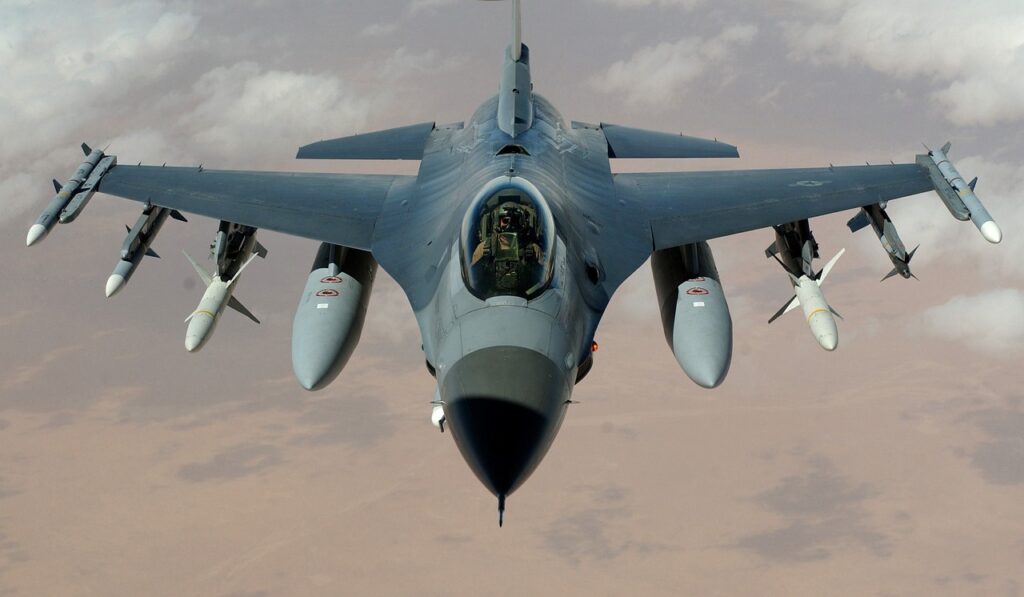
13. **Indigenous Procurement and Reduced Foreign Dependence**The early analytical framework for PLAAF modernization posited a clear trade-off: either procure more capable aircraft from Russia, which would perpetuate dependence on foreign suppliers, or opt for less capable aircraft produced by domestic Chinese aviation companies, enduring a performance penalty. This perspective was shaped by historical incidents where political developments severed China’s access to Soviet arms in 1960 and Western military technology in 1989 following international sanctions.
However, the PLAAF has largely navigated around this perceived dilemma by aggressively focusing on domestic procurement. While limited purchases of high-end Russian multirole fighters like the Su-30MKK and Su-35 were made—primarily to acquire advanced avionics for study and reverse engineering—the vast majority of PLAAF tactical aviation aircraft are now indigenously produced. This includes the successful J-10 series, the J-11B (an improved, reverse-engineered Su-27 variant), and the formidable J-20 fifth-generation stealth fighter. This strategy has significantly reduced China’s dependence on foreign suppliers and its vulnerability to potential cutoffs of spare parts.
Despite these hard-won successes, a lingering reliance on foreign suppliers persisted, particularly concerning advanced aircraft engines. For many years, domestic suppliers struggled to produce turbojet engines with the requisite high thrust-to-weight ratios and service lives. However, recent advances within China’s defense enterprises are finally beginning to overcome this critical limitation, further solidifying indigenous capabilities across the entire aircraft production chain.
A similar strategic approach was applied to surface-to-air missiles (SAMs). Chinese manufacturers successfully reverse-engineered the Russian S-300 SAM, leading to the mass production of the highly capable indigenous HQ-9. While the PLAAF has also acquired advanced Russian S-400 systems for their longer ranges and sophisticated missile-defense capabilities, the bulk of its long-range SAM force, and indeed all of its short- and medium-range SAMs, are now domestically produced. This demonstrates a deliberate, patient strategy to achieve technological self-sufficiency, ultimately allowing the PLAAF to field a technologically advanced force while substantially reducing its reliance on external partners.
Military equipment: Canada
ConventionalLongName: Canada
CommonName: Canada
AltFlag: A vertical triband design (red, white, red) with a red maple leaf in the centre.
NationalMotto: Latin
NationalAnthem: O Canada
RoyalAnthem: God Save the King
MapWidth: 220px
AltMap: A projection of North America with Canada highlighted in green
Capital: Ottawa
Coordinates: Coord
LargestCity: Toronto
OfficialLanguages: Canadian English,Canadian French
Demonym: Canadians
GovernmentType: Westminster parliamentary system
LeaderTitle1: Monarchy of Canada
LeaderName1: Charles III
LeaderTitle2: Governor General of Canada
LeaderName2: Mary Simon
LeaderTitle3: Prime Minister of Canada
LeaderName3: Mark Carney
Legislature: Parliament of Canada
UpperHouse: Senate of Canada
LowerHouse: House of Commons of Canada
SovereigntyType: Independence
SovereigntyNote: United Kingdom
EstablishedEvent1: Canadian Confederation
EstablishedDate1: Mon Jul 01 1867 00:00:00 GMT-0752 (Pacific Daylight Time)
EstablishedEvent2: Balfour Declaration of 1926
EstablishedDate2: Mon Nov 15 1926 00:00:00 GMT-0800 (Pacific Standard Time)
EstablishedEvent3: Statute of Westminster 1931
EstablishedDate3: Fri Dec 11 1931 00:00:00 GMT-0800 (Pacific Standard Time)
EstablishedEvent4: Patriation
EstablishedDate4: Sat Apr 17 1982 00:00:00 GMT-0800 (Pacific Standard Time)
AreaKm2: 9984670
AreaLabel: Total area
AreaRank: 2nd
AreaSqMi: 3854085
PercentWater: 11.76 (2015)
AreaLabel2: Total land area
AreaData2: 9093507 km2
Abbr: on
PopulationEstimate: 41528680
PopulationEstimateYear: 2025
PopulationCensus: 36991981
PopulationCensusYear: 2021 Canadian census
PopulationEstimateRank: 37
PopulationDensityKm2: 4.2
PopulationDensitySqMi: 10.9
PopulationDensityRank: 230
GdpPpp: increase $2.730 trillion
GdpPppYear: 2025
GdpPppRank: 16th
GdpPppPerCapita: increase $65,707
GdpPppPerCapitaRank: 24th
GdpNominal: decrease $2.225nbsptrillion
GdpNominalYear: 2025
GdpNominalRank: 9th
GdpNominalPerCapita: decrease $53,558
GdpNominalPerCapitaRank: 20th
Gini: 29.2
GiniYear: 2024
GiniChange: decrease
Hdi: 0.939
HdiYear: 2023
HdiChange: increase
HdiRank: 16th
Currency: Canadian dollar
CurrencyCode: CAD
UtcOffset: -3.5 to -8
UtcOffsetDst: -2.5 to -7
CallingCode: +1
Cctld: .ca
Categories: 1867 establishments in Canada, All Wikipedia articles written in Canadian English, All articles containing potentially dated statements, Articles containing French-language text, Articles containing Latin-language text
Summary: Canada is a country in North America. Its ten provinces and three territories extend from the Atlantic Ocean to the Pacific Ocean and northward into the Arctic Ocean, making it the second-largest country by total area, with the longest coastline of any country. Its border with the United States is the longest international land border. The country is characterized by a wide range of both meteorologic and geological regions. With a population of over 41 million, it has widely varying population densities, with the majority residing in its urban areas and large areas being sparsely populated. Canada’s capital is Ottawa and its three largest metropolitan areas are Toronto, Montreal, and Vancouver.
Indigenous peoples have continuously inhabited what is now Canada for thousands of years. Beginning in the 16th century, British and French expeditions explored and later settled along the Atlantic coast. As a consequence of various armed conflicts, France ceded nearly all of its colonies in North America in 1763. In 1867, with the union of three British North American colonies through Confederation, Canada was formed as a federal dominion of four provinces. This began an accretion of provinces and territories resulting in the displacement of Indigenous populations, and a process of increasing autonomy from the United Kingdom. This increased sovereignty was highlighted by the Statute of Westminster, 1931, and culminated in the Canada Act 1982, which severed the vestiges of legal dependence on the Parliament of the United Kingdom.
Canada is a parliamentary democracy and a constitutional monarchy in the Westminster tradition. The country’s head of government is the prime minister, who holds office by virtue of their ability to command the confidence of the elected House of Commons and is appointed by the governor general, representing the monarch of Canada, the ceremonial head of state. The country is a Commonwealth realm and is officially bilingual (English and French) in the federal jurisdiction. It is very highly ranked in international measurements of government transparency, quality of life, economic competitiveness, innovation, education and human rights. It is one of the world’s most ethnically diverse and multicultural nations, the product of large-scale immigration. Canada’s long and complex relationship with the United States has had a significant impact on its history, economy, and culture.
A developed country, Canada has a high nominal per capita income globally and its advanced economy ranks among the largest in the world by nominal GDP, relying chiefly upon its abundant natural resources and well-developed international trade networks. Recognized as a middle power, Canada’s support for multilateralism and internationalism has been closely related to its foreign relations policies of peacekeeping and aid for developing countries. Canada promotes its domestically shared values through participation in multiple international organizations and forums.
Get more information about: Canada
Read more about: India’s $15 Billion Fighter Quest: Unpacking the F-21’s Dual History and Strategic Imperatives
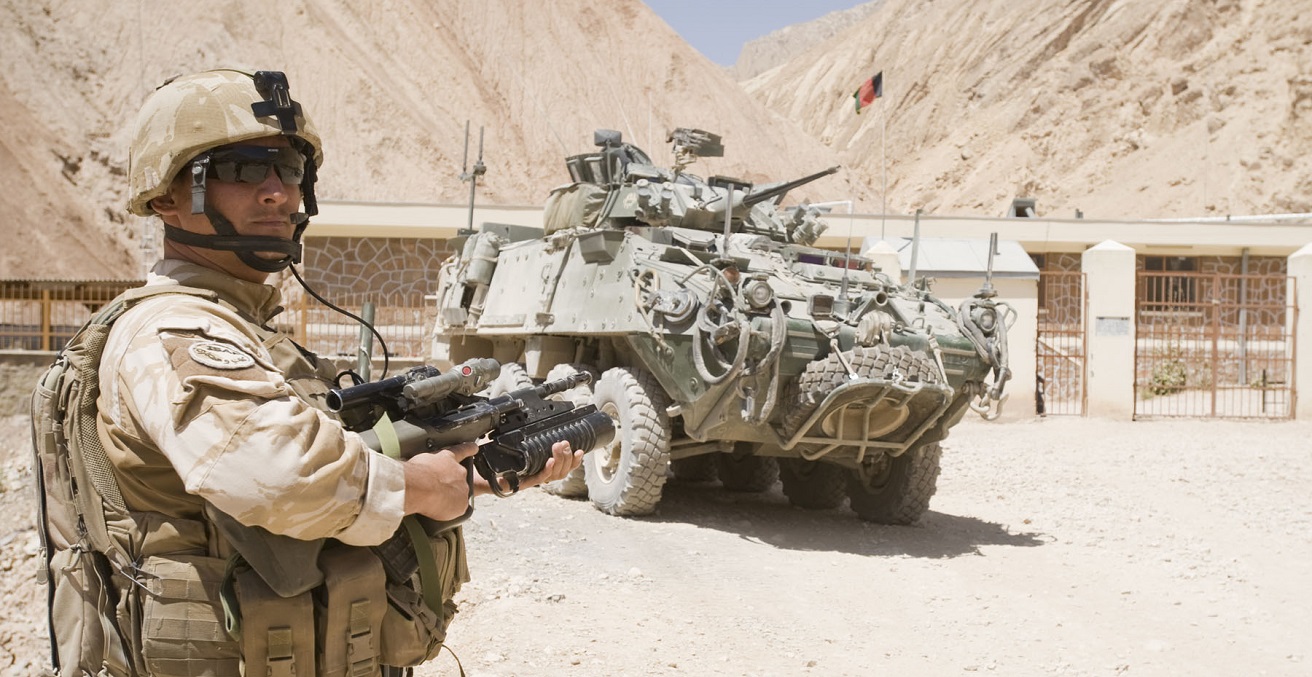
14. **The Enduring Challenge of Limited Combat Experience**While the sheer volume and technological sophistication of the PLA’s hardware displayed at the Beijing parade were undeniably impressive, a critical caveat remains: the profound lack of combat experience. Analysts consistently point out that China has not engaged in a proper high-intensity conflict since the Korean War, or arguably since the Sino-Vietnamese War in 1979. This absence of real-world, large-scale combat operations raises fundamental questions about the PLA’s ability to translate its advanced weaponry into actual battlefield effectiveness.
By way of comparison, the United States military boasts extensive and ongoing combat experience, demonstrating its formidable ability to precisely deliver firepower on target. Examples like the June strike on Iranian nuclear sites, where seven B-2 stealth bombers deployed 14 of the world’s most powerful conventional weapons without drawing any counterfire, highlight a level of operational proficiency and integrated capability that is difficult to imagine within China’s current abilities. The PLAAF, for instance, has yet to unveil a stealth bomber in the B-2’s category, even as the next-generation U.S. B-21 bomber is already in prototype stages.
This disparity fuels a healthy wariness within the analyst community, despite Beijing’s impressive displays. Retired Australian Army Maj. Gen. Mick Ryan acknowledged that while the U.S. remains the strongest military globally, China is undeniably “closing the gap.” He emphasized China’s technological sophistication and indigenous production capabilities, noting that Beijing “just about builds everything it needs indigenously,” preventing coercion by foreign suppliers. However, he critically underscored that “none of the weapons on display have been tested in combat.”
Ultimately, military parades, no matter how visually striking, are not reliable indicators of true military effectiveness. Real combat demands more than just advanced equipment; it requires extensive operational experience, seamless doctrinal integration, and the psychological fortitude of personnel under pressure. This fundamental lack of battle-hardened experience remains a significant, and perhaps the most crucial, unknown factor for the PLA, despite its rapid technological ascent and formidable modernization efforts. The question of whether China’s military has truly “caught up” hinges as much on this intangible as it does on its hardware.
Military equipment: 101st Airborne Division
UnitName: 101st Airborne Division (Air Assault)
Caption: Insignia of the 101st Airborne Division (Air Assault)
Dates: 1918 (National Army),1921–42 (Organized Reserve),1942–45 (Army of the United States),1948–49, 1950–53, 1954– (Regular Army)
Country: Flagu
Branch: army
Size: Division (military)#United States
CommandStructure: XVIII Airborne Corps
Garrison: Fort Campbell,Kentucky
GarrisonLabel: Headquarters
Nickname: special designation
Motto: Rendezvous With Destiny
Colors: legend2
ColorsLabel: Beret color
March: “The Screaming Eagles”
Mascot: Bald eagle
Battles: Western Allied invasion of Germany
Website: https://www.army.mil/101stAirborne|Official Website
Commander1: Major General (United States),David Gardner (general)
Commander1Label: Commander
Commander2: CSM Charles D. Walker
Commander2Label: Command Sergeant Major
NotableCommanders: List of commanders of 101st Airborne Division
IdentificationSymbol: File:Combat service identification badge of the 101st Airborne Division.png
IdentificationSymbolLabel: Combat service identification badge
IdentificationSymbol2: File:Patch of the United States Army 101st Airborne Division (Scorpion W2).png
IdentificationSymbol2Label: shoulder sleeve insignia
IdentificationSymbol3: File:101st Airborne Division DUI.png
IdentificationSymbol3Label: Distinctive unit insignia
IdentificationSymbol4: File:US Army 101st ABN Div Trimming.svg
IdentificationSymbol4Label: Air Assault Badge#Airborne background trimmings
IdentificationSymbol5: File:Flag of the United States Army 101st Airborne Division.svg
IdentificationSymbol5Label: Division Flag
Name: 101st Airborne Division
Date: Present
Parent: XVIII Airborne Corps
Subordinate: 101st Combat Aviation Brigade,101st Airborne Division Artillery,101st Sustainment Brigade
Categories: 101st Airborne Division, 1942 establishments in the United States, Airborne divisions of the United States Army, All Wikipedia articles in need of updating, All Wikipedia articles written in American English
Summary: The 101st Airborne Division (Air Assault) (“Screaming Eagles”) is a light infantry division of the United States Army that specializes in air assault operations. The 101st is designed to plan, coordinate, and execute brigade-sized air assault operations that can be conducted in one period of darkness, at distances up to 500 nautical miles, to seize key terrain and hold it for up to 14 days. In recent years, the 101st was active in foreign internal defense and counterterrorism operations in Iraq, in Afghanistan in 2015–2016, and in Syria, as part of Operation Inherent Resolve in 2018–2021.
Established in 1918, the 101st Division was first constituted as an airborne unit in 1942. During World War II, it gained renown for its role in Operation Overlord (the D-Day landings and airborne landings on 6 June 1944, in Normandy, France); Operation Market Garden; the liberation of the Netherlands; and its action during the Battle of the Bulge around the city of Bastogne, Belgium. During the Vietnam War, the 101st Airborne Division fought in several major campaigns and battles, including the Battle of Hamburger Hill in 1969 and the Battle of Fire Support Base Ripcord in 1970. In mid-1968, the division was reorganized and redesignated as an airmobile division and in 1974, the division was again redesigned as an air assault division. The titles reflect the division’s shift from airplanes to helicopters as the primary method of delivering troops into combat.
At the height of the War on Terrorism, the 101st Airborne Division (Air Assault) had over 200 aircraft. This shrank to just over 100 aircraft with the inactivation of the 159th Combat Aviation Brigade in 2015. In 2019, media reports suggested the Army was working to restore the 101st’s aviation capabilities so it can return to lifting an entire brigade in one air assault.
The 101st’s headquarters is at Fort Campbell, Kentucky. Many members of the 101st are graduates of the U.S. Army Air Assault School, which is co-located with the division. The school is known as one of the Army’s most difficult courses; only about half of those who begin it will graduate.
The Screaming Eagles were referred to as “the tip of the spear” by former U.S. Secretary of Defense, Robert Gates, and the most potent and tactically mobile of the U.S. Army’s divisions by General Edward C. Meyer, then Chief of Staff of the Army.
Get more information about: 101st Airborne Division
Read more about: Beyond the Spectacle: What China’s Military Parade Reveals for Asia and a Reordering World
The journey through the modernization of the People’s Liberation Army Air Force reveals a concerted, strategic effort to build a world-class aerial combat and support arm. From the transformation of its fighter and bomber fleets to the systematic expansion of its support aircraft, and a determined shift towards indigenous procurement, the PLAAF is undeniably a force to be reckoned with. Its evolving roles and missions, particularly in areas like counter-intervention and maritime strike, underscore a growing ambition to project power regionally and globally. Yet, the shadows of unanswered questions remain, most prominently the absence of high-intensity combat experience. As China continues its relentless drive for military supremacy, the ultimate test of its stealth and speed, and whether it has truly caught up, will only be proven when these advanced systems face the crucible of real-world conflict.

